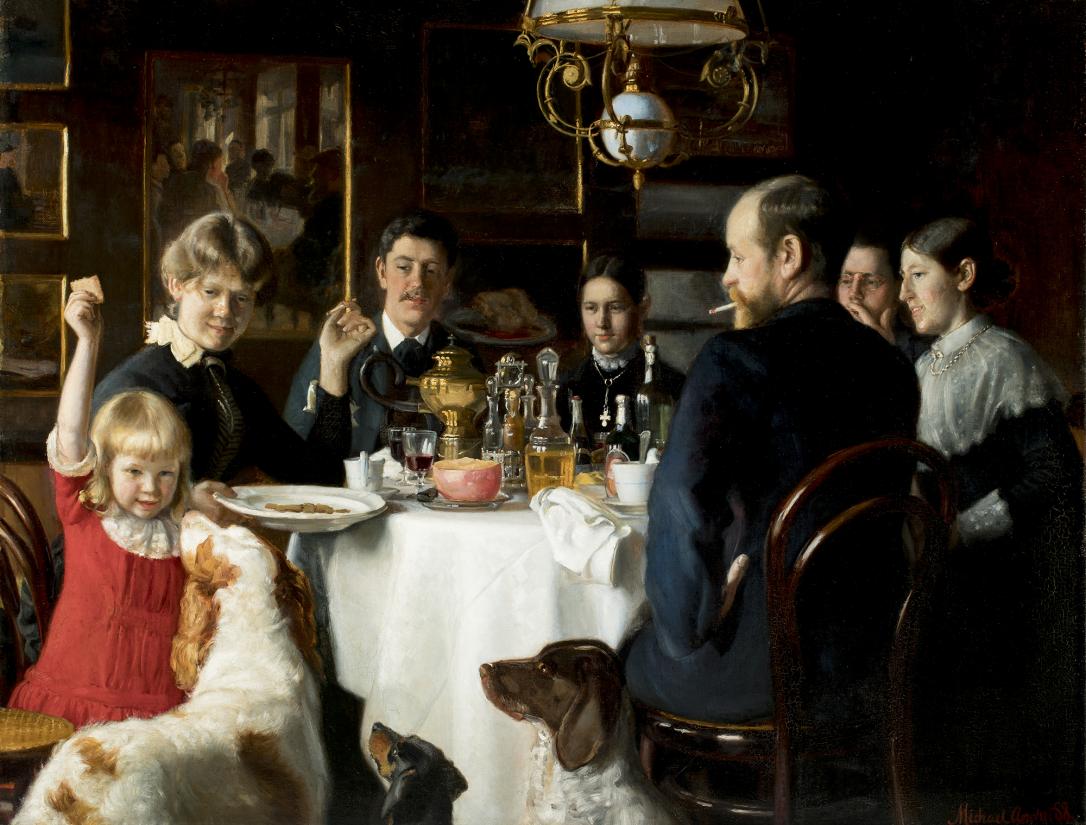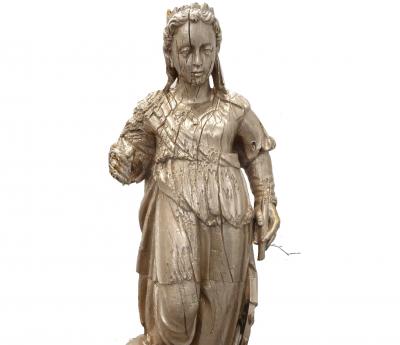One of Michael Ancher’s principal works has now become a permanent part of the collection of the Art Museums of Skagen.
The painting was bought with support from[DS1] Aage og Johanne Louis-Hansens Fond, an anonymous family foundation, the Augustinus Foundation and the New Carlsberg Foundation.
An unusual principal work
Ved Frokostbordet is enthusiastically welcomed by the museum’s art historians. It is a painting of high artistic quality that demonstrates Michael Ancher’s mastery of the technically demanding topic of interior scenes.
Michael Ancher is mainly known for paintings of fishermen portraying the hardy, rugged men in their oilskins, as they head out onto the stormy sea or wait impatiently for calmer weather at the grocer’s stall. However, Ved Frokostbordet represents a different aspect of the artist’s practice: technically demanding interior paintings, often large compositions.
According to museum curator Mette Bøgh Jensen of the Art Museums of Skagen, Ved Frokostbordet features several techniques that are known from two of Michael Ancher’s other principal works: Den Druknede [The Drowned Fisherman] (1896) and Juledag 1900 [Christmas Day 1900] (1903): ‘It is a very dark painting, with the light coming in from a single source on the left and falling on a group of people. The light picks out a few recurring colours: in Ved Frokostbordet, this includes, in particular, Helga Ancher’s red dress, the red cheese rind and the beer label [DS2] on the table. If we compare with Den Druknede and Juledag, the light enters in the same way and similarly highlights a single colour. In these other paintings, the colour that draws our attention is yellow: the drowned fisherman’s oilskins are yellow, as is Helga Ancher’s Christmas Day dress.’
Who is who?
Helga Ancher, Anna and Michael Ancher’s daughter, is standing on the left, in a red dress. Behind her sits the teacher and organist Helene Christensen, who was a good friend of the Ancher family. On Helene Christensen’s left sits John Brøndum, Anna Ancher’s younger brother, and on his left sits Marie Møller, Anna Ancher’s cousin. The person at the head of the table might be the Norwegian painter Nils Hansteen. He has Anna Ancher on his left side. The last person at the table is Degn Brøndum, Anna Ancher’s older brother, who ran Brøndums Hotel in Skagen.
The circle is completed by three of the hunting dogs that Michael Ancher and Degn Brøndum both owned and had a shared passion for.
Who did it first?
The lunch scene was a popular and common topic of art during the 1880s, which was also embraced by the Skagen painters. They often used each other as models, and the lunch paintings offered an opportunity to gather their circle of friends, family and acquaintances into a coherent composition.
In 1884, P. S. Krøyer painted Ved Frokosten [At Lunch], which was embedded in the panels in the dining hall at Brøndums Hotel, and which is seen in the background of Ved Frokostbordet. Krøyer’s painting had been a big success and was an inspiration to several other artists, including Michael Ancher.
‘For my part, I am currently working on a painting for which I used or drew on your photograph of the main living room with the dogs and Helga at the lunch table with several figures and several dogs,’ Michael Ancher wrote in a letter to P. S. Krøyer in January 1888. Precisely at the time when Michael Ancher was writing to P. S. Krøyer to secure his approval for basing his work on the scene in Krøyer’s photograph, P. S. Krøyer was putting the finishing touches on his legendary lunch painting Hip, Hip, Hurra! [Hip, Hip, Hurrah!].



